After developing satellite launchers, creating and launching communication and observation satellites and developing manned space programs, China began the first phase of lunar research using unmanned spacecraft (article from Galileo) * The leaders of the Chinese space program announced yesterday that the third manned spacecraft to orbit the Earth will be launched this year
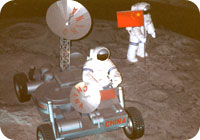
China announced yesterday (8/1/08) that this year it will launch its third manned spacecraft, Shenzhe 7, three years after the second spacecraft - Shenzhe 6 and five years after it surprised the world by launching the first manned spacecraft. The news agencies reported that China denied any connection between the launch date and the Olympic Games. As we reported back on 26/11/2007, China is expected to launch the Shenzhou spacecraft on October 7, 2008, about a month after the end of the Olympic Games.
China will not send a manned spacecraft to the moon
Tal Inbar's article from Galileo - a spaceship without a pilot
China, which has had an independent launch capability into space since 1970, has begun the first phase of lunar exploration using unmanned spacecraft. The Chinese space program covers several areas, starting with the development of satellite launchers, through the production and launching of communication and observation satellites and ending with manned space programs, within the framework of which two missions have been launched so far into orbit around the Earth.
China's lunar program intrigues many observers, as it is widely believed that China will try its hand at sending a manned landing mission to the moon, probably towards the year 2020, at the same time as the American program for the return of astronauts to the moon, and with the other Asian programs for lunar exploration, including India's lunar program and Japan.
In this review, China's "road map" for exploring the moon using unmanned research spacecraft will be outlined. As usual, when examining China's space programs, there is more hidden than visible, both due to a lack of official and accurate information, and due to deliberate disinformation employed by China, regarding
She doesn't want to reveal her future plans in too much detail. At the same time, thanks to the relative openness of recent times, combined with semi-official sources that feed websites and blogs in the field of space, it is possible to put together an extensive picture of China's efforts in the field of lunar research, both unmanned and manned.
China has a three-phase plan for unmanned lunar exploration:
* In the first stage: a lunar compass that will deal with mapping the moon and photographing it in high quality.
* In the second stage: landing a research spacecraft on the surface of the moon, from which a small robot emerged to explore the immediate environment.
* In the third stage: a landing spacecraft that will collect soil samples from the lunar soil and launch them to the Earth.
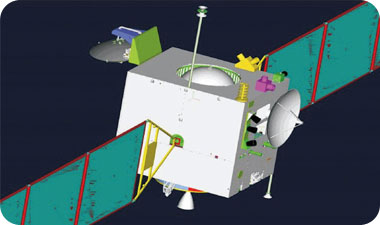
This plan was included in an official Chinese document published in 2006, and a schedule was also attached to it: the lunar probe in 2007, a landing with a rover robot in 2012 and the return of lunar soil samples in 2017. At this point, the first goal was achieved, with the successful launch of the Chang spacecraft Chang'e 1 on October 1, 24.10.2007. In doing so, China joined the countries and entities that launched spacecraft to the moon, including the Soviet Union, the United States, the European Space Agency and Japan. A launch to the moon of the Indian Chandrayaan spacecraft is expected soon, and British and German research spacecraft are also planned.
The Chang'e 1 spacecraft entered the coffee orbit around the moon on November 5. Its main tasks are to analyze the chemical and mineral composition of the surface of the moon, and photograph it using stereoscopic cameras and X-ray sensors in order to perform a 2,300D mapping of the surface. The XNUMX-kilogram spacecraft transmitted images in late November, but China has so far released only one image. According to the plan, the spacecraft will continue to circle and explore the moon for about a year.
The Chinese spacecraft is based on a proven communication satellite platform, and it includes unique scientific equipment for the mission weighing 127 kg. In an unusual move, the spacecraft's launch pad was open to tourists, who paid an entrance fee of about $100 to watch the launch of the Long March 3A launcher. The name "Long March", the long march, obviously refers to the famous "Long March" of Mao and his people, which began in 3.
The launch of the Chinese spacecraft to the moon is another step in the Asian space race - it joins a Japanese lunar exploration spacecraft that was launched in September (Kaguya), and another spacecraft that will be launched by the Indian Space Agency to the Earth's nearest neighbor in space. These three countries have already expressed their desire to continue the study of the moon, and two of them, China and India, have expressed interest in manned study of the moon.
Contrary to its custom, China is very open about its unmanned lunar exploration program. This openness is reflected both in the official words of Chinese speakers in the media and at scientific conferences, both in the launch of websites dedicated to the lunar mission and in the release of videos simulating China's future missions in this area, on the Internet.
First step - hyphen
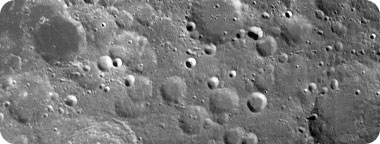
The first spacecraft launched by China towards the Earth's nearest neighbor, Chang'e 1, is an orbiter, that is, a spacecraft designed to enter the orbit around the moon, without being able to land on its surface. Although this space operation is not innovative, it has considerable challenges, especially in the field of trajectory calculations. It is worth noting that both the Soviet Union and the United States failed many times in putting spacecraft into orbit around the moon, while the European, Japanese and Chinese spacecraft succeeded in the mission on the first attempt.
The purpose of the Chinese spacecraft is to create a database that includes high-resolution images (relative to other research missions in the solar system) of the surface of the moon, in order to create a complete lunar globe, which will enable the next steps in the Chinese space missions to explore the moon - landing spacecraft on the moon in areas of scientific interest. China revealed in a special ceremony the first photograph received from the spacecraft, and shortly after, claims began to appear on various websites that it was actually a photograph taken by an American spacecraft. China hastened to deny this claim, and announced that "in the future" it will make the database of images and data from the Chang'e 1 spacecraft available to researchers from all over the world.
The Changa 1 spacecraft is equipped with a stereoscopic imaging system. The spacecraft's missions include locating useful elements on the surface of the moon (such as potassium, uranium, thorium, oxygen, aluminum, magnesium, iron, calcium, titanium and others) which could be used, in due course, for the settlement of humans on the surface of the moon. The spacecraft is also intended to study the effect of the solar wind on the lunar environment. This information could also help in planning manned space missions for long periods. According to various reports, the spacecraft is also designed to discover concentrations of the helium 3 isotope, which in the future could be used as an energy source. This isotope is extremely rare on Earth, but abundant on the surface of the Moon. The spacecraft is also equipped with a laser rangefinder, to measure its height above the surface; in a solar particle detector; in an ion detector; and in spectrometers in the fields of X-ray and gamma radiation.
Second stage - a lander and a patrol robot
Second stage - landing on the moon
In the second phase of lunar research using spacecraft, China plans to land a lander on the moon, which will make a soft landing on the surface. The landing is planned for 2012. The Chinese lunar lander will be equipped with landing legs and rocket braking engines, like the American Apollo series spacecraft, and not use the technique of braking using airbags, as the United States does on Mars. The spacecraft will be equipped with a tiny robot, similar in dimensions and general design to the first robot that the United States landed on Mars in 1997. The robot will be able to expand the scope of the spacecraft's research, and will be equipped with a mass spectroscope, which will be used to analyze and determine the exact composition of the rocks and soil near the landing site. From the few photographs released by China's space agency, it appears that the robot will be very similar in shape to the NASA vehicles that have been on Mars since 2004, Spirit and Opportunity. The Chinese lunar robot will have six wheels, and will be equipped with an array of photovoltaic cells (solar cells) to generate the electricity needed to drive it.
Third step - soil sample from the moon
In 2017, China plans to land a spacecraft on the moon designed to automatically bring soil samples to Earth. The only country so far that collected and brought soil samples from the Moon to Earth using an unmanned spacecraft was the Soviet Union, in spacecrafts of the Luna series, which brought small amounts of lunar soil to Earth. Published videos and photos indicate that the Chinese spacecraft for bringing lunar samples is very similar to the Soviet spacecraft from the early seventies of the 20th century, and that the sample chamber is extremely small, and will probably be able to contain a few kilograms of lunar soil. Nevertheless, one should not underestimate the technological achievement of the mission of collecting soil samples, which includes (in addition to the launch to the moon, the navigation to it and the soft landing on its surface) also the takeoff from the surface of the moon, navigation to the earth and precise landing of the sample chamber on Chinese soil.
Step four - manned mission?
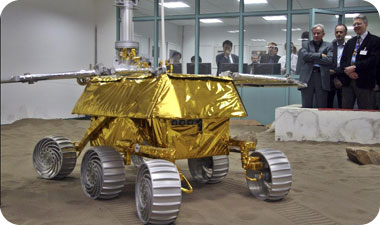
The most intriguing question is, of course, when China intends to carry out a manned mission to the moon, and especially a mission in which a team of taikonauts (Chinese astronauts) will be placed on the surface of the moon. According to the rumors, and even according to sources from the Chinese space establishment, China does aspire to carry out a manned landing on the moon. A senior and official source from the Chinese government denied the rumors at the end of November, and claimed that China does not have a manned lunar program. Nevertheless, at international space exhibitions, as early as 1997, China presented models of a lunar space vehicle and astronaut mannequins inside a diorama (model) simulating a lunar landing site.
In order to be able to carry out a manned space mission, China must develop a more powerful launch capability than it currently has. The launcher used to launch the Shenghou series of spacecraft, in its current configuration, is not capable of putting a manned spacecraft into orbit around the moon. Many reports, also from official sources, deal with the heavy Chinese launcher known as Long March 5, which is now in advanced planning stages. This heavy launcher will be able to put a manned Shenzhou spacecraft into orbit around the moon, and later also support a landing mission on the surface of the moon.
Following the reports about a plan to send humans to the moon, a senior Chinese spokesperson came out - unusually - with a blanket denial. Sun Laiyan, head of China's space administration, said (on November 27.11.2007, 2020): "I have read reports in Western media, according to which China will carry out a manned landing on the moon in 1. I do not think that such a plan exists. So far, our lunar missions have only included research programs using unmanned spacecraft. After the success of the Chang'e XNUMX spacecraft, the next goal is to land a robotic research vehicle on the moon." However, Sun added: "I believe that one day China will land its own astronauts on the moon. I hope to see that day.”
This is not the first time that Chinese officials have denied reports of a manned lunar exploration program: in October 2007, the head of the Chang'e program, Luan Enjie, said in an interview with China's state news agency: "A manned landing on the moon is a project that involves Many difficulties, great risks and huge investments. It would be too early to talk about a manned landing on the moon, for now.” In March 2007, the head of China's manned spaceflight launcher program, Huang Chunping, said that given an adequate budget, China is capable of landing a man on the moon within 15 years.
New spaceport
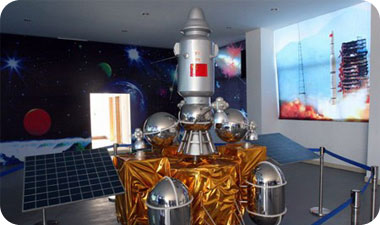
On September 22, 2007, China announced that it was starting to build a new launch site into space, the fourth in number. The new site will be located in Hainan province, and is primarily intended for China's future Long March 5 launcher. This missile is expected to enter service between 2010 and 2012. China's new space base is located 19 degrees north of the equator, a location that will allow for a significant increase in the mass of satellites that will be launched using the new rocket, which is in advanced stages of development. The new launch base could also be used in the future for launching manned missions to the moon, due to its unique location.
An interim summary of Chinese space programs shows an orderly and structured program of unmanned lunar exploration, and very general statements about technological capability for manned missions. At this stage there is no official statement by China on a concrete date for a manned lunar mission - a mission that may give China great prestige, but its execution will be a considerable budgetary burden, with little scientific profit on its side.
Published in issue 113 of the Galileo journal, January 2008

2 תגובות
It is desirable first that the Chinese equip the products they sell with screwdrivers with a triangular tip.